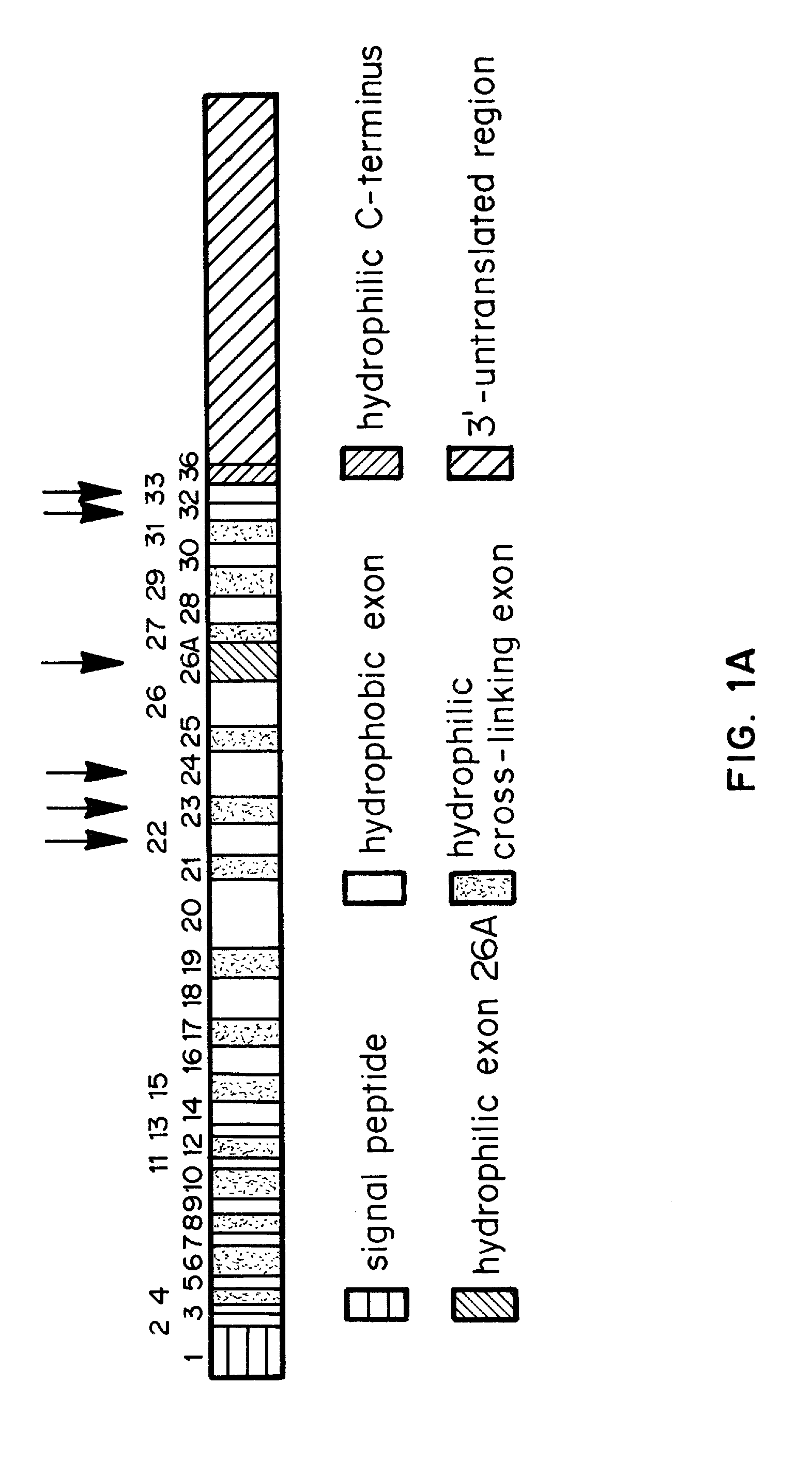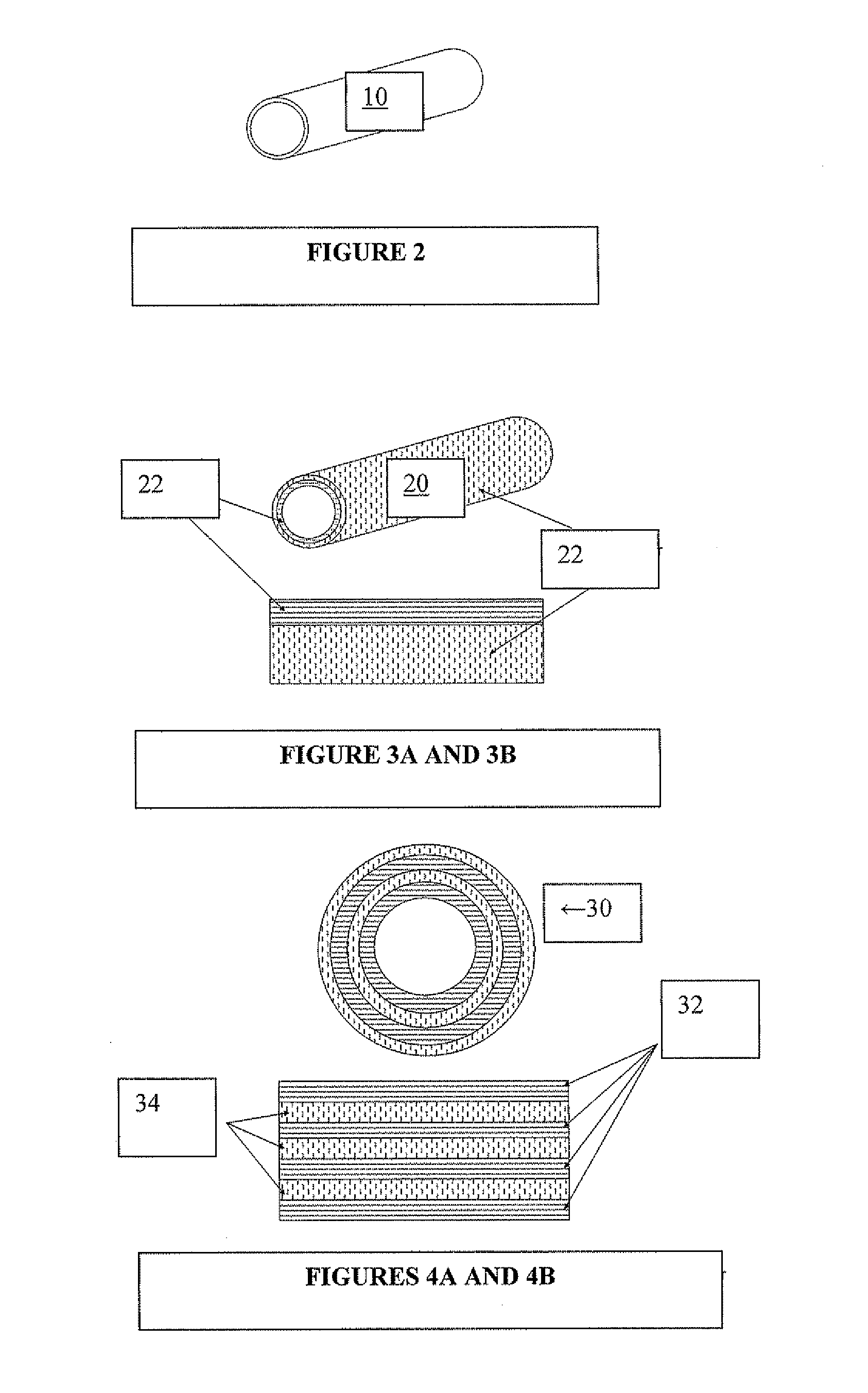Tropoelastin-based protoelastin biomaterials
a biomaterial and elastin technology, applied in the field of improved elastin based biomaterials, can solve the problems of high biocompatibility, and achieve the effect of promoting cell adhesion
- Summary
- Abstract
- Description
- Claims
- Application Information
AI Technical Summary
Benefits of technology
Problems solved by technology
Method used
Image
Examples
example 1
Protoelastin Synthesis Using Chemical Cross-Linking of Tropoelastin
[0117] Tropoelastin was dissolved in cold phosphate buffered saline (PBS) at a concentration of 100 mg / ml. The amine reactive cross-linker, bis(sulfosuccinimidyl)suberate (BS3) was freshly prepared by dissolving in PBS immediately prior to use to a concentration of 100 mM. The solutions were mixed in a 1:10 ratio to give a final cross-linker concentration of 10 mM. The solution was poured into a mould, prior to placement at 37° C. to facilitate coacervation and cross-linking. The resulting protoelastin was washed repeatedly with PBS and stored in a sterile environment.
example 2
Protoelastin Synthesis Using HMDI
[0118] 100 mg of tropoelastin was placed in a small weight boat. In 10 μl aliquots, 100 μl of PBS was added to the tropoelastin slowly over several minutes. With the addition of each aliquot, a spatula was used to fold the solution into the protein. The tropoelastin eventually took on a gum-like consistency, which could be drawn into fibers and molded into shapes. To fix, the protein was submerged in a 10% 1,6-diisocyanatohexane (HMDI) in propanol solution and allowed to stand overnight. Elasticity was restored to the protoelastin by repeated washing in water and then in PBS.
example 3
Protoelastin Tube by Centrifugation
[0119] Tropoelastin (300 mg) was dissolved in cold PBS (2.7 ml) over several hours. When the protein solution had fully dissolved, BS3 (17.1 mg) was dissolved in a separate solution of PBS (300 μl). The tropoelastin and BS3 solutions were briefly mixed in an iced vessel, before being transferred to a suitable mould, also on ice.
[0120] The capped mould was placed in a centrifuge, preheated to 37° C. The mould was centrifuged at 1500 rpm for 5 min, before transfer to a 37° C. incubator where it was left to set overnight. After careful removal from the mold, the protoelastin tube was washed repeatedly with PBS and stored in a sterile environment.
PUM
| Property | Measurement | Unit |
|---|---|---|
| diameter | aaaaa | aaaaa |
| diameter | aaaaa | aaaaa |
| tensile strength | aaaaa | aaaaa |
Abstract
Description
Claims
Application Information
 Login to View More
Login to View More - R&D
- Intellectual Property
- Life Sciences
- Materials
- Tech Scout
- Unparalleled Data Quality
- Higher Quality Content
- 60% Fewer Hallucinations
Browse by: Latest US Patents, China's latest patents, Technical Efficacy Thesaurus, Application Domain, Technology Topic, Popular Technical Reports.
© 2025 PatSnap. All rights reserved.Legal|Privacy policy|Modern Slavery Act Transparency Statement|Sitemap|About US| Contact US: help@patsnap.com



